In modern wristwatch movements, such as the ETA 2824-2, the stop-seconds function, also called hacking seconds, is largely standard. This means that when setting the hands, the second hand is stopped in order to set the watch as accurately as possible to the second. Here I present two pocket watches from the period between 1930 and 1940 that also have this complication.
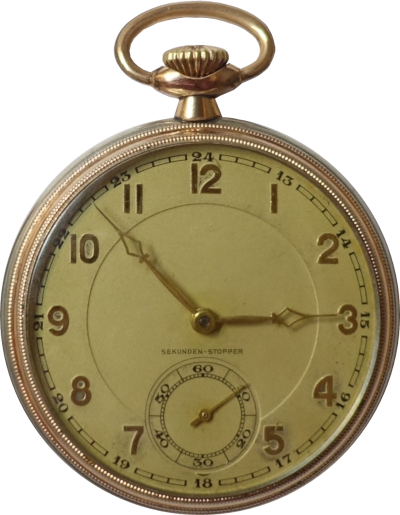
The stop-seconds function was never widespread in pocket watches. Although particularly accurate watches were needed, they did not necessarily have to correspond exactly to a time standard, such as a radio signal. Although this may have been necessary in exceptional cases.
And even today, in my opinion, setting wristwatches to the exact second is more of a fetish than a necessity. Whose daily routine depends on the watch being absolutely accurate?
Favor 14
The first pocket watch with a stop-seconds mechanism presented here caught my eye in an online auction because the dial had no brand, but was labeled SEKUNDEN-STOPPER above the small seconds:
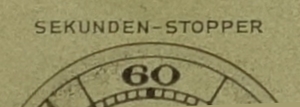
My curiosity was aroused, so I ended up with the watch. The covers of the watch only showed the buffalo logo of Gustav Rau, a case manufacturer from Pforzheim, Germany. The simple Swiss lever movement with only 7 jewels and a diameter of 18 1/2´´´ is marked with the number 14. This made it very easy to identify it as a Favor 14.
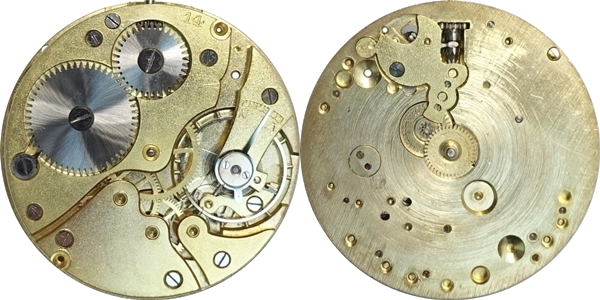
Favor was a brand of the German watch and movement manufacturer Schätzle & Tschudin. Founded in 1909, the company was based in Lörrach, directly on the Swiss border, until 1911. In 1911, the company moved to nearby Weil am Rhein, where the first movements were produced from 1913. With the outbreak of the First World War, the company was initially closed, later producing armaments. In the 1920s, Pforzheim developed into the center of German watch production. Consequently, Schätzle & Tschudin opened a branch for the assembly of watches in Pforzheim in 1921. In 1933, the company had 40 employees. The watch shown above probably dates from around this time. The company existed until the 1980s.
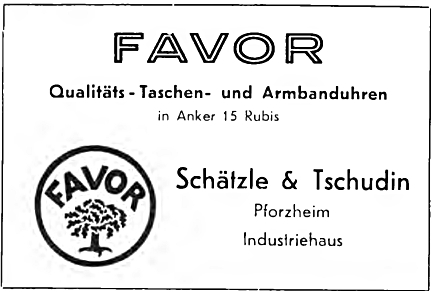
So let’s take a look at how the stop of the small seconds works when the hands are set, i.e. when the crown is pulled out. You have to look closely to recognize in the next picture in the area marked in red that something is blocking the balance directly on a balance screw from top left to bottom right.
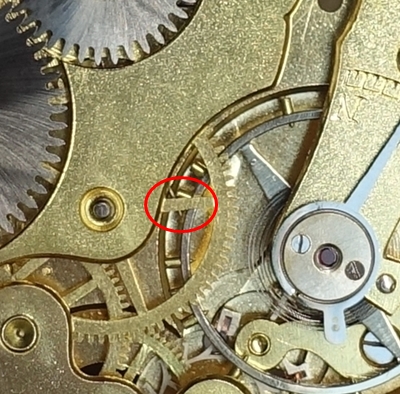
The stop seconds mechanism is therefore realized by blocking the balance and thus stopping the movement. The mechanism can be seen after removing the barrel bridge:

There is a lever that is connected to the yoke on the dial side. If this lever moves downwards when the crown is pulled, the lever presses on the side of the balance and stops it. The next picture shows the corresponding position on the dial side.
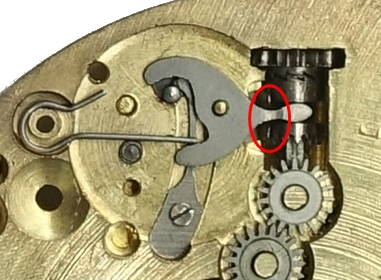
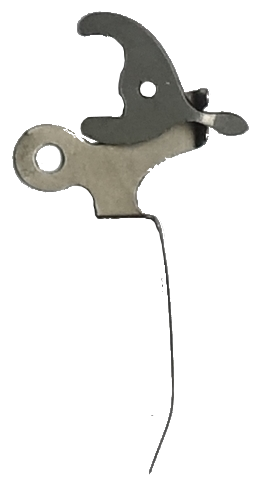
Unfortunately, I do not know to what extent Favor 14 movements were delivered with stop seconds. I have had a few Favor 14 movements in my hands, this one is the first with a stop-seconds mechanism!
By the way, a lever connected to the yoke is still the standard mechanism for the second stop in wristwatch movements, such as the ETA 2824-2!
Junghans J41
The second watch presented here is also German-made: a Junghans pocket watch with Junghans J41.
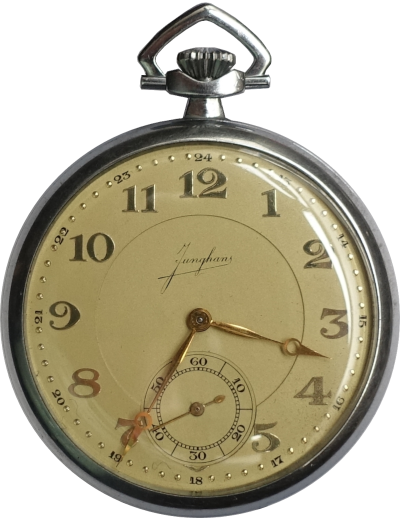
The Junghans J41 with a diameter of 18 1/2´´´, 15 jewels, a bimetallic screw balance with Breguet hairspring and a swan-neck fine regulator was built from 1930 to 1938. The stop-seconds function was a standard feature of this movement. Particularly high-quality watches were given the name “Meister” (Master) by Junghans.
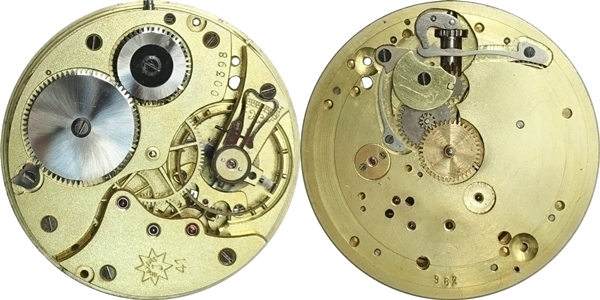
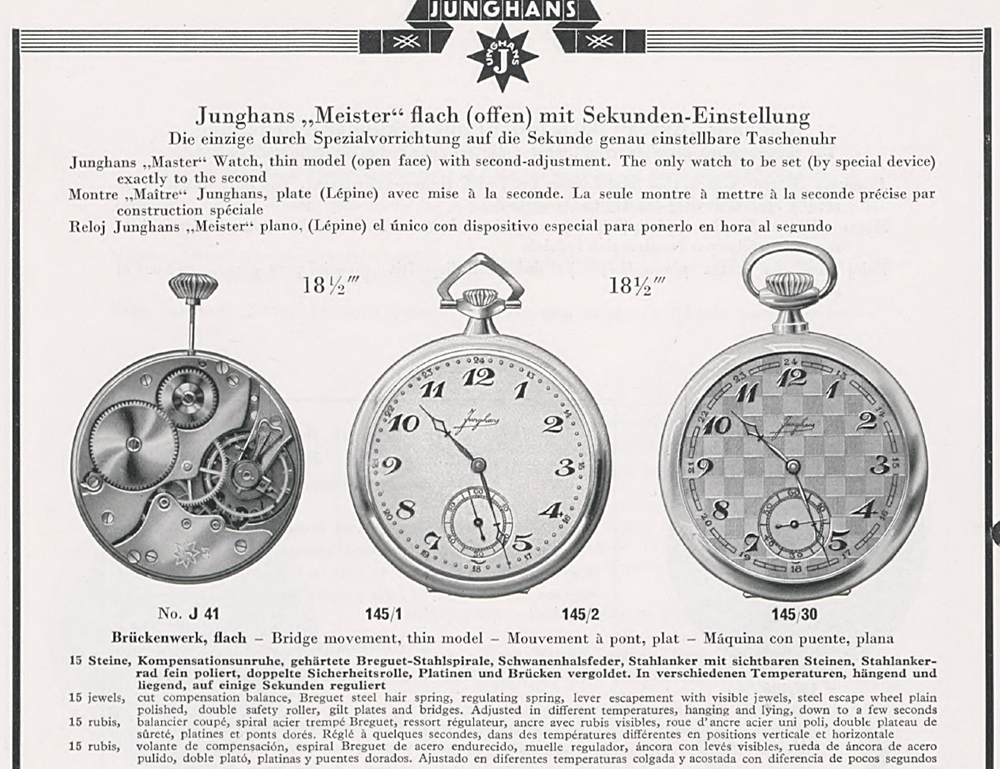
The mechanism for the stop seconds on this movement is located on the underside of the barrel bridge:
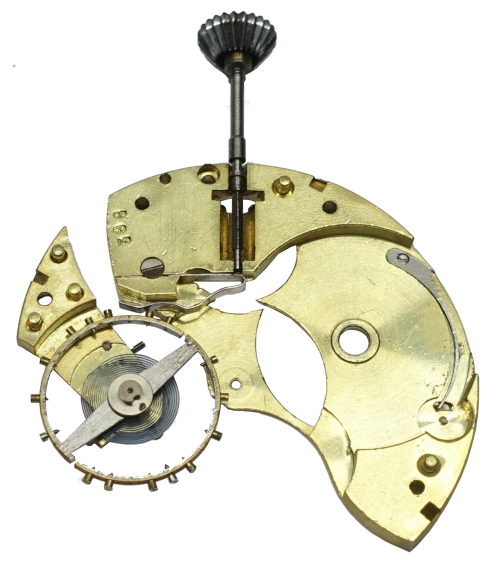
It is almost ingeniously simple:
The front tip of the winding stem is slightly longer than most other winding stems. When the crown is pushed in, this tip presses against a spring, which is thus held away from the balance wheel. When the crown is pulled, this spring moves in the direction of the balance wheel and blocks it. The picture above shows the state when the crown is pulled. And the next picture shows the same condition from the bridge side. The course of the spring is marked in red.
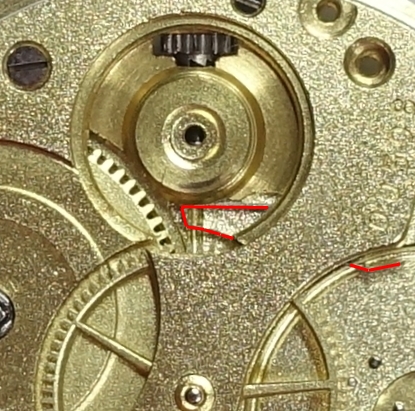
Junghans also equipped other pocket watch movements with a stop-seconds function, such as the J41a and some members of the J47, J48 and J49 families.
The stop-seconds function in watch movements is therefore a very simple complication that usually only requires a single additional component.
